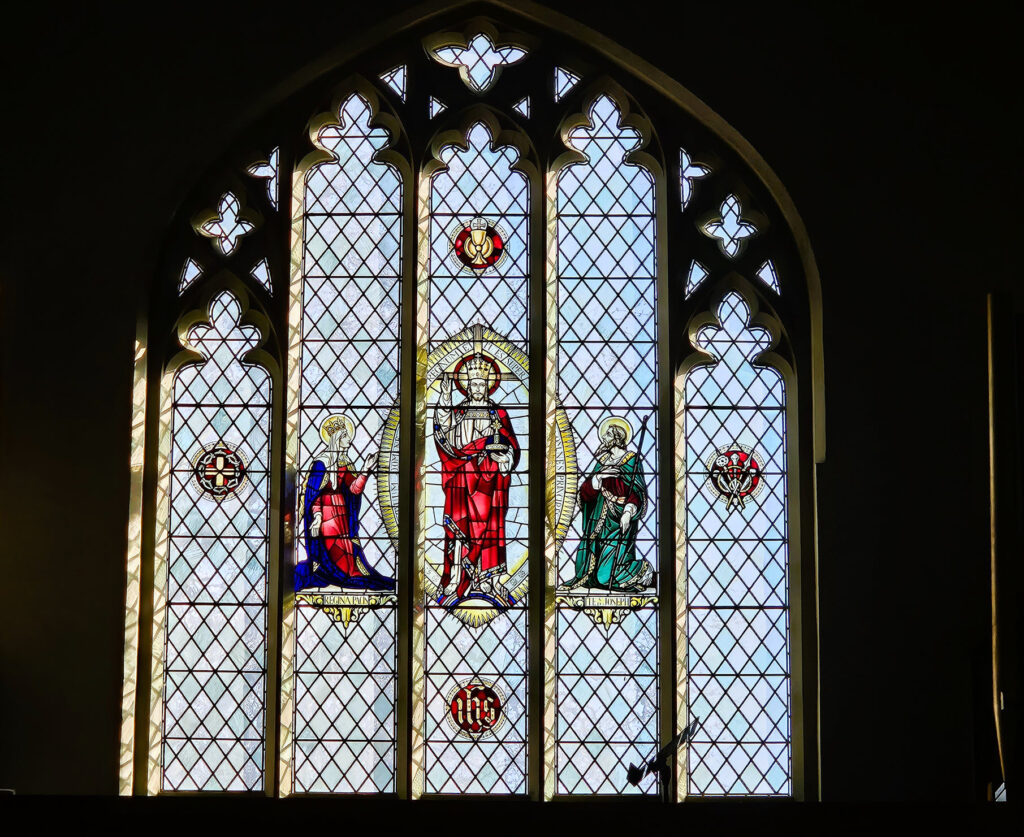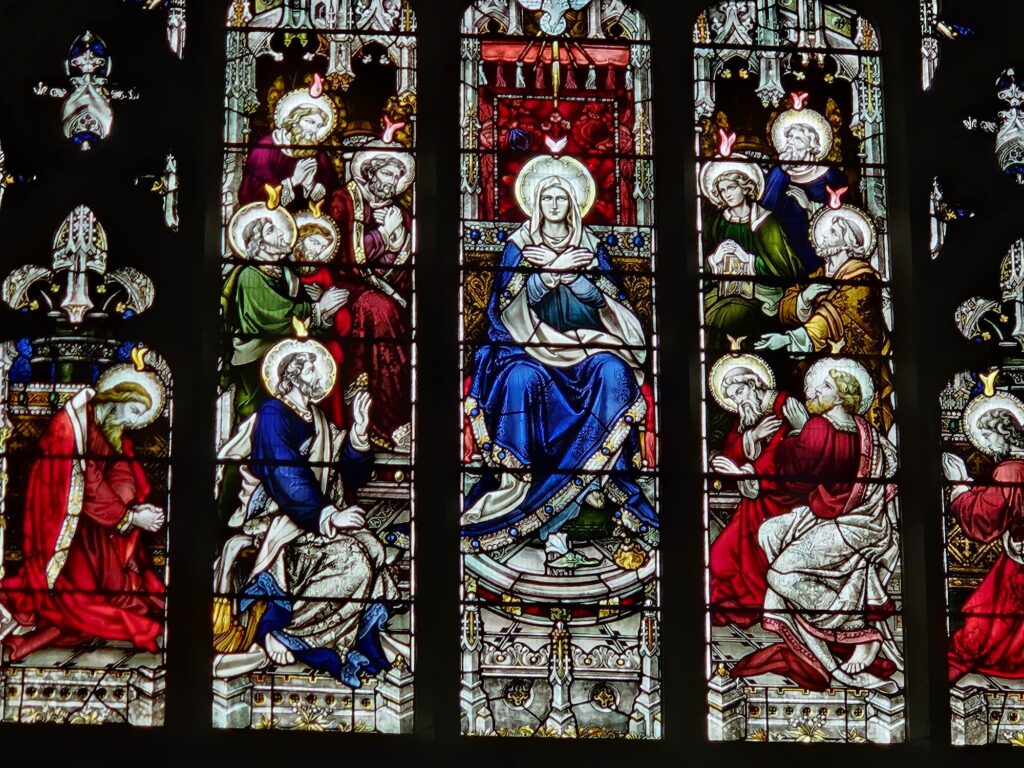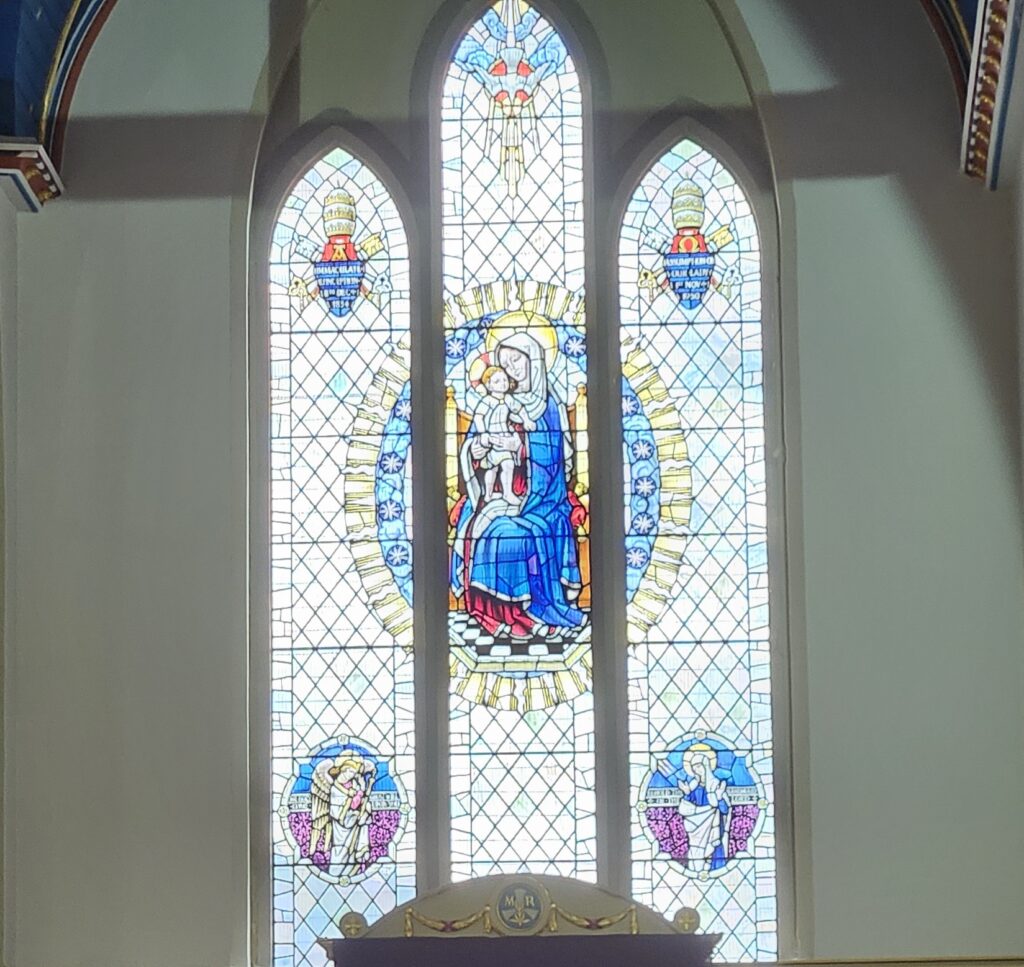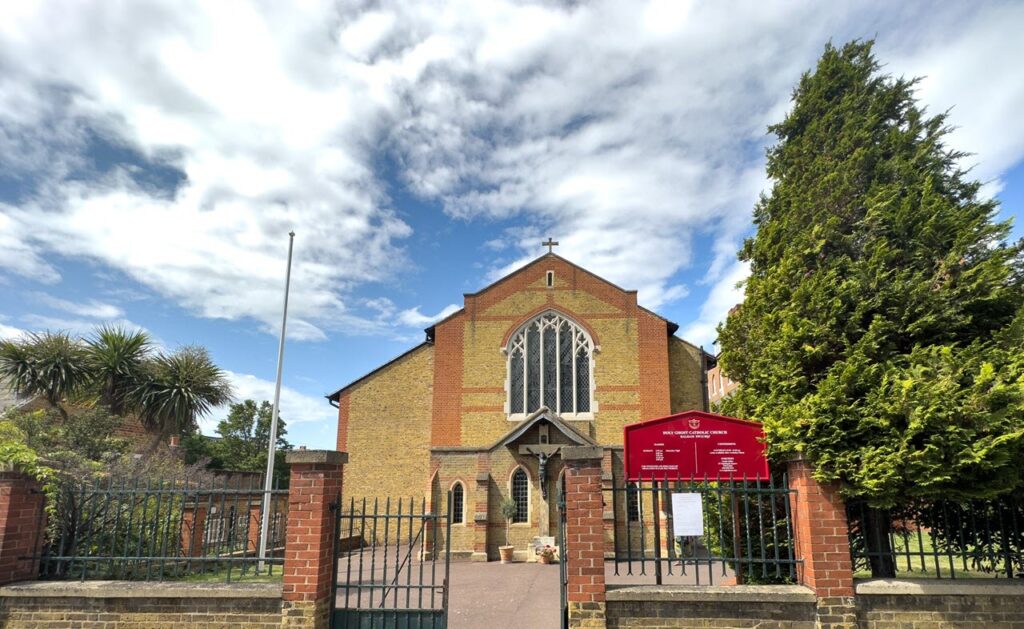
The Church of The Holy Ghost, Balham
The foundation stone was laid by Bishop Francis Bourne, Coadjutor Bishop of Southwark, in the summer of 1896. The church was solemnly opened by him on February 14th, 1897. The architect was Mr. Leonard Stokes who chose Decorated Gothic as his style, and the church was built to accommodate 250.
In 1901 the convent chapel was built in a space which had been reserved for that purpose between the church and convent. The original idea was that the chapel should be, at least in appearance, a side aisle of the church corresponding to the one which Canon Thompson completed in 1931. Just before the building commenced the plan of Mr. Stokes was rejected by the convent authorities who now decided that their chapel should be an altogether distinct entity from the church. To carry out their wishes the work was entrusted to a Belgian architect who designed and built the present structure. At a later date the nuns allowed the dividing wall between church and chapel to be perforated and grilles inserted so that the services in the church could be followed from the chapel.
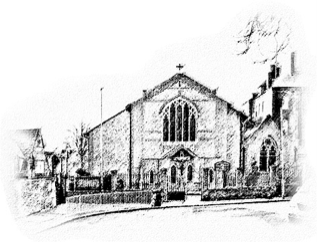
During the rectorship of Fr. John Moynihan (1908- 1915) several improvements were made to the church. The porch was added, the pulpit erected, and the interior of the church made considerably brighter by a window in the sanctuary and another above the porch. The stained-glass in both these windows suffered severe damage during the last war. When restored after the war the window over the porch was very much simpler in design.
On May 17th, 1934, the church was consecrated by Bishop Amigo. It was three years since the side aisle with the Lady Chapel had been added and only nine months since the tragic sale of the convent and chapel to the B.B.C. The chapel had now become a workshop, and three reinforced concrete rooms had been built within it.
The L.C.C. acquired the property in 1962, and in the final stages of purchase a pre-emption clause, inserted in the 1933 sale, came to light. By this clause the diocese had the option to purchase the chapel in the event of the B.B.C. desiring to sell the property. The diocese decided to buy, and on June 21st, 1963, within the former convent grounds the key to the chapel was handed over to the parish. It was the feast of the Sacred Heart: on this feast and on these very grounds the first Mass in Balham was offered 73 years before.
The work of restoring the chapel and incorporating it into the church began on July 1st, 1963. With the Bishop’s permission it was decided that it should be the Lady Chapel dedicated to Our Blessed Lady under the title of the Visitation, as the Mother of God was especially honored there under that mystery by the second community of nuns, the Sisters of the Visitation, who came to Balham in 1923. His Lordship also gave approval for the existing Lady Chapel to be converted and dedicated to St. Joseph. In memory of and in deep gratitude for the first Mass in Balham, on the feast of the Sacred Heart, June 13th, 1890, a shrine to the Sacred Heart has been erected near the altar rails by the Lady Chapel. Hitherto statues of the Sacred Heart and of St. Joseph occupied the niches on either side of the sanctuary. These have now been replaced by statues of the grandparents of Our Lord: St. Joachim was donated by the Sanctuary Guild, St. Anne by the children of the Holy Ghost School.
On July 2nd, 1964, the feast of the Visitation, the Bishop opened and blessed the new Lady Chapel and dedicated the parish to the Immaculate Heart of Mary. On May 3rd, 1965, His Lordship honored Balham once more by coming to consecrate the Lady Altar. On the same day St. Joseph’s Altar was consecrated by Monsignor William Westlake, Rector of St. Joseph’s Diocesan College, Mark Cross.
Description
The church was built in 1896-97 from designs by Leonard Stokes, and has additions of 1901, 1915 and 1931. The intended tower and attached presbytery were never built. The church is in a free Arts and Crafts version of late Gothic, built of brick laid in English bond, with stone dressings and a Westmorland slate roof. On plan it consists of entrance porch/narthex, nave with south aisle, narrow north circulation aisle, Lady Chapel (former nuns’ chapel) and sanctuary with side chapels. The exterior bears little resemblance to Stokes’s original design, the only feature in common being the horizontal brick banding. The five-light west window with Perp tracery is, with the porch in front, an addition of c1915; the latter is built of stock brick with red brick detail, and has a profusion of buttresses (which Stokes generally avoided). The entrances are on the sides of this porch; at the front is a crucifix commemorating the consecration of the church in 1934. Set back to the right (north) is the red brick gable end of the former nuns’ chapel of 1901, with a two-light Dec window, and to the left is the plain end wall of the south aisle, added in 1931.

The interior is more recognisably Stokesian, with a narrow north circulation aisle and hexagonal, capital-less piers dividing the five bays of the nave. The circulation aisle on the south side has been lost by the widening of the aisle in 1931. Between the arcades, wall shafts rise up to a cornice and a timber collar rafter roof. There is a modern gallery at the west end of the nave. At the east end there is a wide chancel arch leading to the square-ended sanctuary, which has a five-light Perp east window, short in its proportions to accommodate a reredos. On the north side of the sanctuary arches with metal gates connect to the nuns’ chapel. Other than at this point, the chapel was not originally linked with the church, but in 1963 three openings were formed between its nave and the north circulation aisle of the church. The nuns’ chapel is now the Lady Chapel; it has a pointed barrel vaulted timber roof with tie beams and crown posts.
The three altars (high altar, Lady Chapel and St Joseph’s altar) are all of polychrome marble, as are the two ambos (blessed in 1979), side walls and steps of the sanctuary. The tabernacle door is repoussé work, featuring the Pelican in its Piety. A wooden crucifix is attached to the east wall, said to be Oberammergau work of the eighteenth century. Over this, the five-light east window has post-war glass,
Our Lady and Apostles at Pentecost. Other glass: at the west end, post-war glass, Christ flanked by Mary and Joseph; in the east window of the Lady Chapel, Madonna and Child, signed by Goddard & Gibbs; and in St Joseph’s chapel, a modern window depicting St Oliver Plunkett and St Benedict Joseph Labre. Otherwise the glass is Cathedral glass in pastel shades.
There are statues of St Anne and St Joachim on either side of the chancel arch. The design of the altarpiece in the Lady Chapel (Douglas Purnell c. 1971) is based on the Visitation attributed to Luca della Robbia in the church of San Giovanni Fuorcivitas, Pistoia; it was carved by Dorigo Vigilio Prugger and painted by Henry Farmer FRSA. The altar in St Joseph’s chapel on the south side of the chancel is of verde antico and has flanking relief tableaux by Prugger, 1964. The font is located at the west end of the Lady Chapel, behind gates; it is an octagonal design, given in memory of Fr John Moynihan, who died in 1917. The Stations are cast and painted three-dimensional pieces resting on cast corbels; they were installed in 1931. The seating consists of pine benches with panelled ends.
Source: Parish archive & taking-stock.org.uk

